Date posted: 26-10-2024 | Last updated : 26-10-2024

With the desire to have a high, slender nose that harmonizes with the face, rhinoplasty is becoming more and more popular. However, behind that beauty are questions many people are concerned about: What are the methods of rhinoplasty? What is the rhinoplasty procedure like? In this article, Dr. Richard Huy will answer those questions and provide useful information about rhinoplasty.
Rhinoplasty is a cosmetic procedure aimed at changing the shape and size of the nose to create a beautiful nose that harmonizes with the face. It helps to correct defects such as a flat nose, low nose bridge, crooked nose, large nasal tip, or wide nostrils, and can even improve deformities caused by injury.
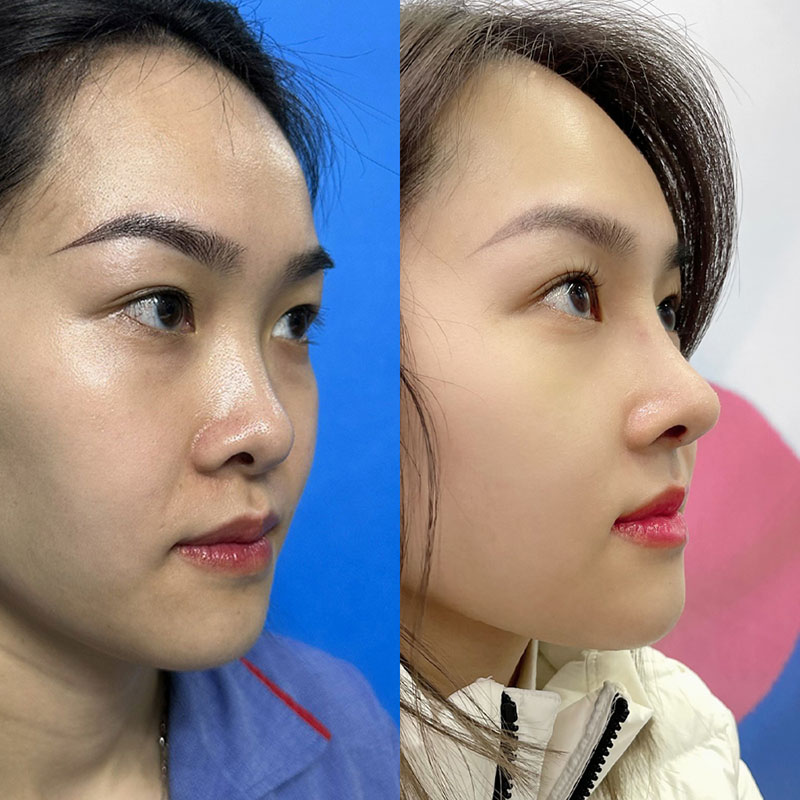
Rhinoplasty is a cosmetic procedure that enhances the shape of the nose, making it more balanced and in harmony with the face.
A beautiful nose helps people feel more confident in their daily interactions. Rhinoplasty balances the facial features, creating a harmonious and proportionate appearance. In some cases, rhinoplasty can also help improve breathing issues.
There are various rhinoplasty methods, ranging from the use of artificial materials to autologous cartilage (self-donated cartilage). Each method has its own advantages and limitations, suitable for the specific needs and conditions of each individual. Below are the two most common rhinoplasty methods:
Structural rhinoplasty is a modern technique that reconstructs the entire nasal structure. Instead of focusing solely on raising the bridge of the nose, structural rhinoplasty also treats the tip, nostrils, and nasal septum to create a natural and harmonious nose shape that complements the individual’s facial features.
This method is suitable for people with multiple nasal imperfections who want to comprehensively improve the nose shape. It is also ideal for individuals who have previously undergone rhinoplasty but are dissatisfied with the results and wish to have a natural, well-proportioned nose.
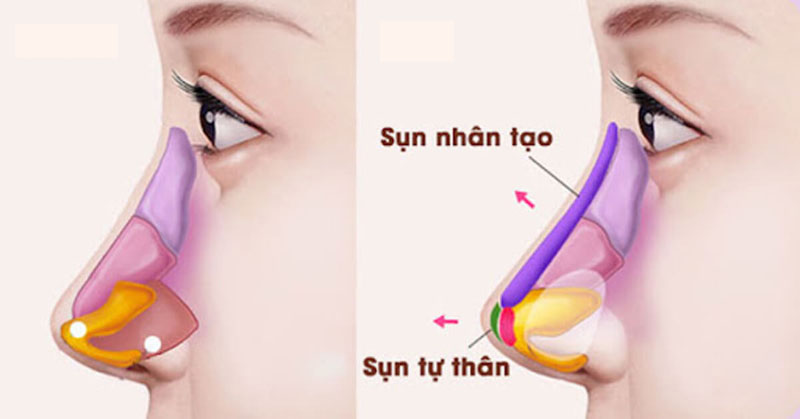
Structural rhinoplasty is a technique to reconstruct the entire structure of the nose.
Advantages of Structural Rhinoplasty:
- Comprehensive restructuring of the nose, correcting most defects such as flat nose, wide nose, large nasal tip, wide nostrils, crooked nose bridge, etc.
- Creates a natural, balanced nose shape that complements facial features.
- High durability by combining autologous cartilage and artificial cartilage.
- High safety when performed at reputable medical facilities by skilled surgeons.
Disadvantages:
- Longer surgery time compared to other rhinoplasty methods.
- Higher cost due to the complexity of the procedure.
Rib cartilage rhinoplasty uses autologous rib cartilage to reshape the nose. The surgeon will take a small portion of the patient’s rib cartilage, usually from the 6th or 7th rib, to create a high nose bridge, a naturally rounded nasal tip, or to correct other nasal defects.
This method is suitable for individuals with multiple nasal imperfections, those who want to reshape their nose, or those whose noses are deformed due to accidents, medical conditions, or previous unsatisfactory rhinoplasty results. If you desire a naturally high and well-structured nose, rib cartilage rhinoplasty may be an option to consider.
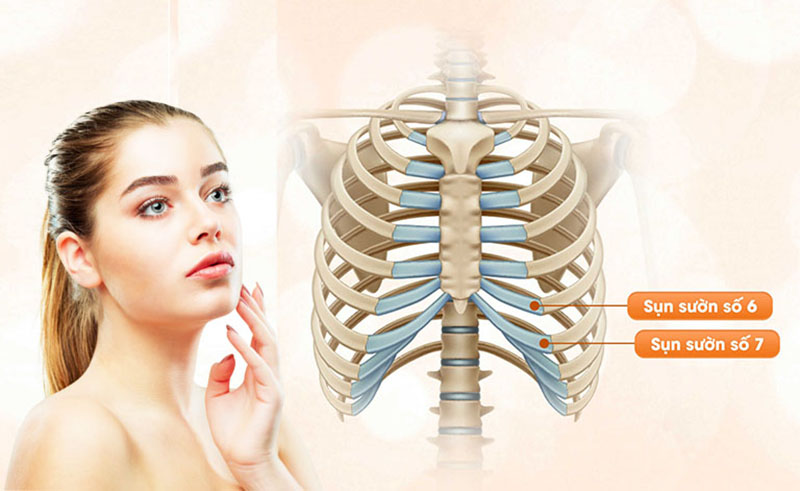
Rib cartilage rhinoplasty uses autologous rib cartilage to reshape the nose.
Advantages of Rib Cartilage Rhinoplasty:
- Creates the perfect nose shape as rib cartilage can be molded into various forms.
- High durability since rib cartilage is strong and less likely to shrink or deform over time.
- Safe with a lower risk of infection and allergies because autologous cartilage is highly compatible with the body.
- Long-lasting nose shape with minimal need for revisions.
Disadvantages:
- Longer surgery time due to the need to extract rib cartilage.
- Due to the complexity of the procedure, rib cartilage rhinoplasty tends to be more expensive than other rhinoplasty methods.
- Longer recovery time compared to other methods.
Dr. Richard Huy's detailed rhinoplasty procedure:
Step 1: Examination and Consultation with the Doctor
Dr. Richard Huy will personally examine the nose shape, identify the defects that need correction, and advise the most suitable methods for the client. The doctor will also take the time to listen to the client's preferences regarding their desired nose shape, then develop a specific surgical plan, including the rhinoplasty method, the type of cartilage to be used, and the techniques to be applied.
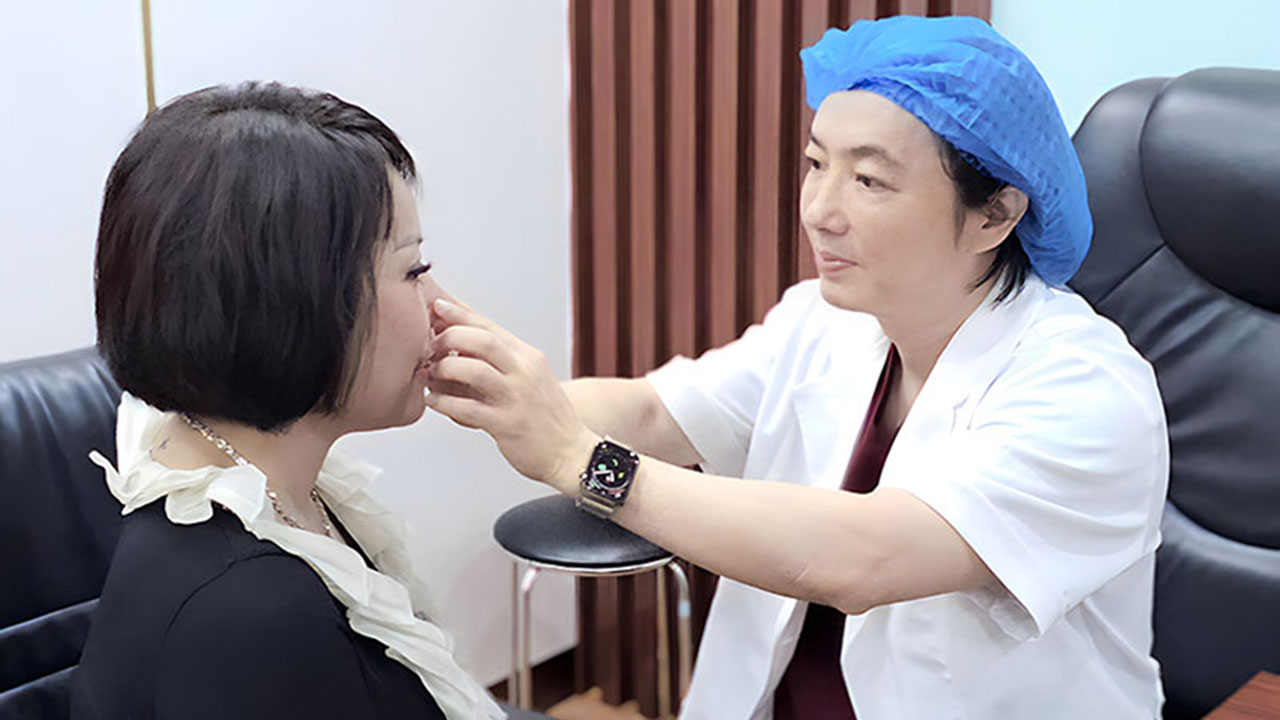
Step 2: General Health Examination
The client will undergo necessary tests to ensure good health and suitability for surgery. Commonly prescribed tests include blood tests, drug reaction tests, heart rate measurements, and blood pressure checks.
Step 3: 3D Nose Shape Simulation and Measurements
Dr. Richard Huy will use 3D imaging technology to simulate the new nose shape, allowing the client to clearly visualize the post-surgery result. Then, the doctor will mark and measure the areas to be adjusted on the nose to ensure high precision during the surgery.
Step 4: Cleansing and Anesthesia/Sedation of the Nose Area
The nose area will be thoroughly cleaned to ensure sterility. The doctor will then administer anesthesia or sedation (depending on the surgical method) so the client will not feel any pain throughout the procedure.
Step 5: Surgery
The doctor will make a small incision inside the nose to minimize scarring, then separate the tissues to access the bone and cartilage that need adjustment. The doctor will use autologous or artificial cartilage to reshape the nose according to the pre-established plan. Once the reshaping is complete, the doctor will close the incision using cosmetic sutures.
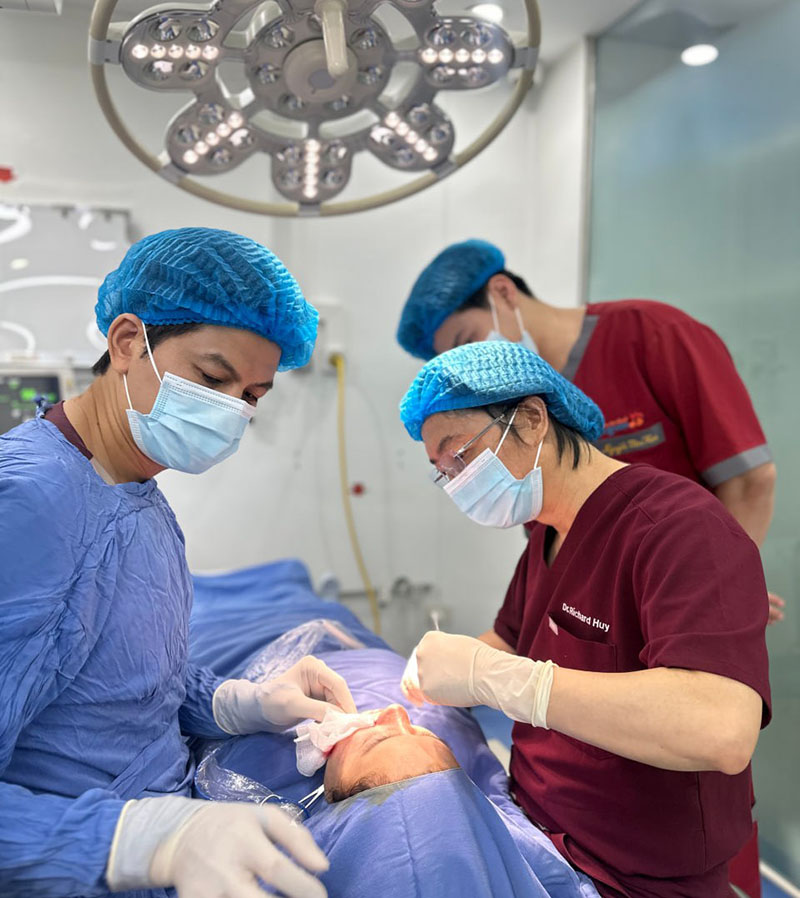
Dr. Richard Huy performing rhinoplasty for a client
Step 6: Post-Surgery Care and Follow-Up
Immediately after surgery, the client will be cared for at the hospital for a few hours. The doctor will guide the client on how to care for the incision, along with dietary and rest instructions for home recovery.
Before leaving, the client will be scheduled for periodic follow-up appointments to monitor recovery and make any necessary adjustments.
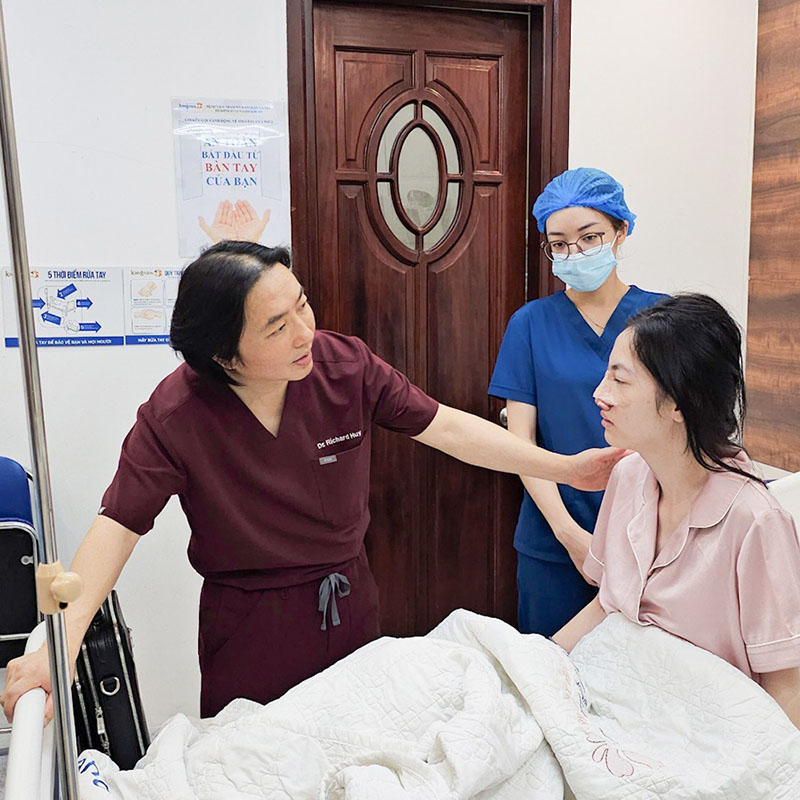
Dr. Richard Huy is conducting post-operative check-up for the client
- Proper care after rhinoplasty is crucial to achieving the desired aesthetic results and minimizing the risk of complications. Below are some post-surgery care tips from Dr. Richard Huy:
- Avoid getting the incision wet for one week after surgery. When washing your face, use a damp towel to gently wipe around the nose area. Minimize touching the nose to prevent infection.
- Apply cold compress for the first 2-3 days after rhinoplasty to reduce swelling and pain effectively.
- Take antibiotics, anti-inflammatory medication, and pain relievers as prescribed by the doctor to prevent infection and relieve discomfort.
- Clean the nose by gently wiping it with cotton soaked in saline solution.
- Avoid touching or massaging the nose area to prevent displacement of the nose bridge or damage to the surgical results.
- Eat soft, easily digestible foods and avoid spicy, hot foods, seafood, sticky rice, alcohol, and beer.
- Attend follow-up appointments as scheduled to monitor the healing process and promptly address any complications.
- Avoid scratching or applying pressure to the nose area, as it may affect the incision and cause swelling.
- Do not wear glasses for at least 4 weeks to avoid putting pressure on the nose bridge.
- Avoid makeup in the early stages to prevent infection around the nasal incision.
- Refrain from participating in sports or vigorous activities for at least one month.
- Limit consumption of foods that can cause swelling, such as seafood, fried foods, and spicy dishes.
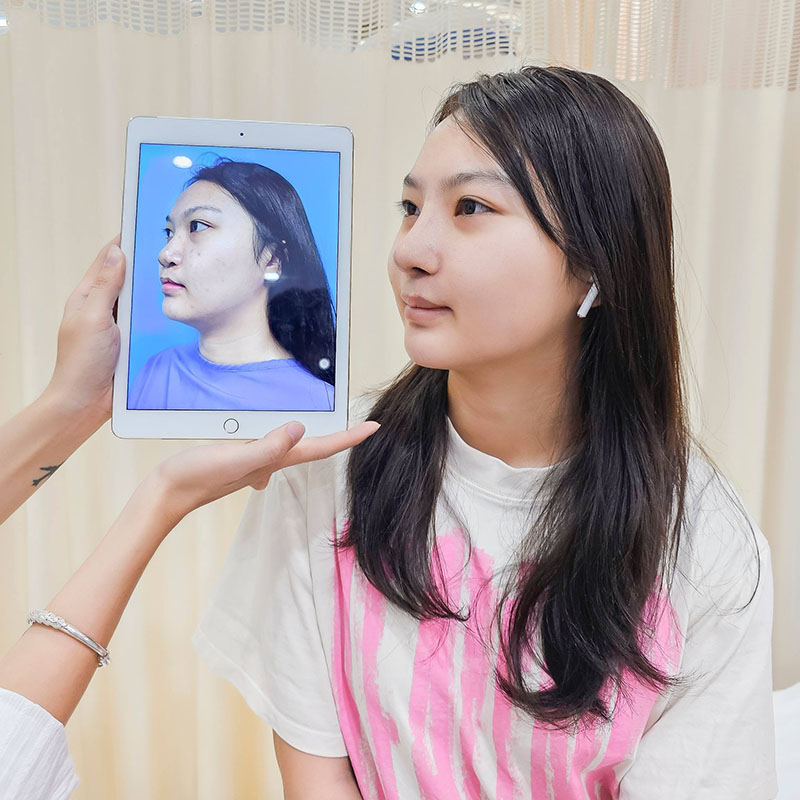
Follow proper post-operative care to achieve a natural-looking nose without complications
You can rest assured that the rhinoplasty procedure is not painful, as we perform local anesthesia on the nasal area so that the client feels no pain during the surgery. However, after the surgery, you may feel some soreness and slight swelling in the nose area during the first few days. This is completely manageable, and the discomfort will be well controlled with pain killers.
Autologous cartilage, such as rib cartilage, has high compatibility with the body, making the nose look natural and allowing for long-lasting results. Additionally, rib cartilage has good hardness and elasticity, making it easier for doctors to shape the nose according to the desired look. Compared to other types of cartilage, rib cartilage is less likely to be rejected or deformed.
Typically, the initial recovery from rhinoplasty takes about 7-10 days. At this point, the incision on the nose will have started to heal, and you can visit the doctor for suture removal. Over the next 2-4 weeks, the shape of the nose will stabilize, and you can gradually return to your normal activities. However, it may take 3-6 months for the nose to fully stabilize and look naturally beautiful.
If the rhinoplasty is performed by an experienced and highly skilled doctor, it will not affect your ability to breathe. In some cases, rhinoplasty can even improve breathing issues for those with a deviated septum or very narrow nostrils.
This article has provided all the consultations from Dr. Richard Huy regarding rhinoplasty, and we hope it gives clients a comprehensive overview of rhinoplasty services, helping them choose a suitable and safe method.